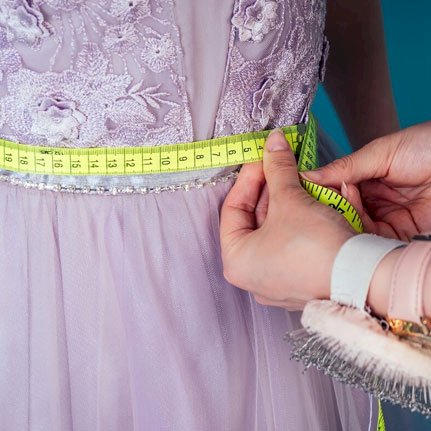The Art of Bespoke Tailoring: An Insider's Look at the Craftsmanship and Skill Involved
Bespoke tailoring is an art form that has been honed over centuries. It requires a high level of craftsmanship and skill, as well as a deep understanding of fabrics, patterns, and body types.

Bespoke tailoring is an art form that has been honed over centuries. It requires a high level of craftsmanship and skill, as well as a deep understanding of fabrics, patterns, and body types. In this article, we will take an insider's look at the world of bespoke tailoring and explore the intricate details that go into creating a custom-made garment.
 Firstly, it's important to understand that bespoke tailoring is a highly personalized process. Unlike off-the-rack clothing, bespoke garments are made to measure and tailored specifically to the individual's body shape and size. This means that every detail is carefully considered, from the cut of the fabric to the placement of the buttons.
Firstly, it's important to understand that bespoke tailoring is a highly personalized process. Unlike off-the-rack clothing, bespoke garments are made to measure and tailored specifically to the individual's body shape and size. This means that every detail is carefully considered, from the cut of the fabric to the placement of the buttons.
One of the key elements of bespoke tailoring is attention to detail. The tailor will take multiple measurements to ensure a perfect fit, and will often make adjustments to the garment throughout the process to ensure that it fits the individual's body shape perfectly. This level of precision requires a high level of skill and expertise, as well as a deep understanding of the individual's body type.
Another important aspect of bespoke tailoring is the choice of fabric. Bespoke tailors will often work with high-quality materials such as cashmere, silk, and wool, as these fabrics offer a level of comfort and durability that cannot be matched by cheaper materials. The choice of fabric also affects the drape and overall look of the garment, and a skilled tailor will know how to select the right fabric for each individual.
The process of bespoke tailoring is also highly collaborative. The tailor will work closely with the individual to understand their style preferences and the purpose of the garment. This allows the tailor to make suggestions and offer advice on the design and cut of the garment, ensuring that it meets the individual's needs and expectations.
One of the most striking aspects of bespoke tailoring is the level of customization that is available. The individual has complete control over the design of the garment, from the cut and shape to the color and fabric. This level of customization allows the individual to create a truly unique and personalized garment that reflects their style and personality.
Finally, it's worth noting that bespoke tailoring is a time-consuming process. A single garment can take weeks or even months to complete, as every detail is carefully considered and crafted by hand. This level of attention to detail and dedication to the craft is what sets bespoke tailoring apart from mass-produced clothing.
Conclusion
Bespoke tailoring is an art form that requires a high level of skill, craftsmanship, and attention to detail. The process of creating a custom-made garment and Dress alteration is highly personalized and collaborative, and allows the individual to create a truly unique and personalized piece of clothing. From the choice of fabric to the cut and shape of the garment, every detail is carefully considered to ensure a perfect fit and a high-quality finish. Bespoke tailoring is a timeless craft that celebrates the art of individuality and style, and is an investment in quality and craftsmanship that will last a lifetime.





































